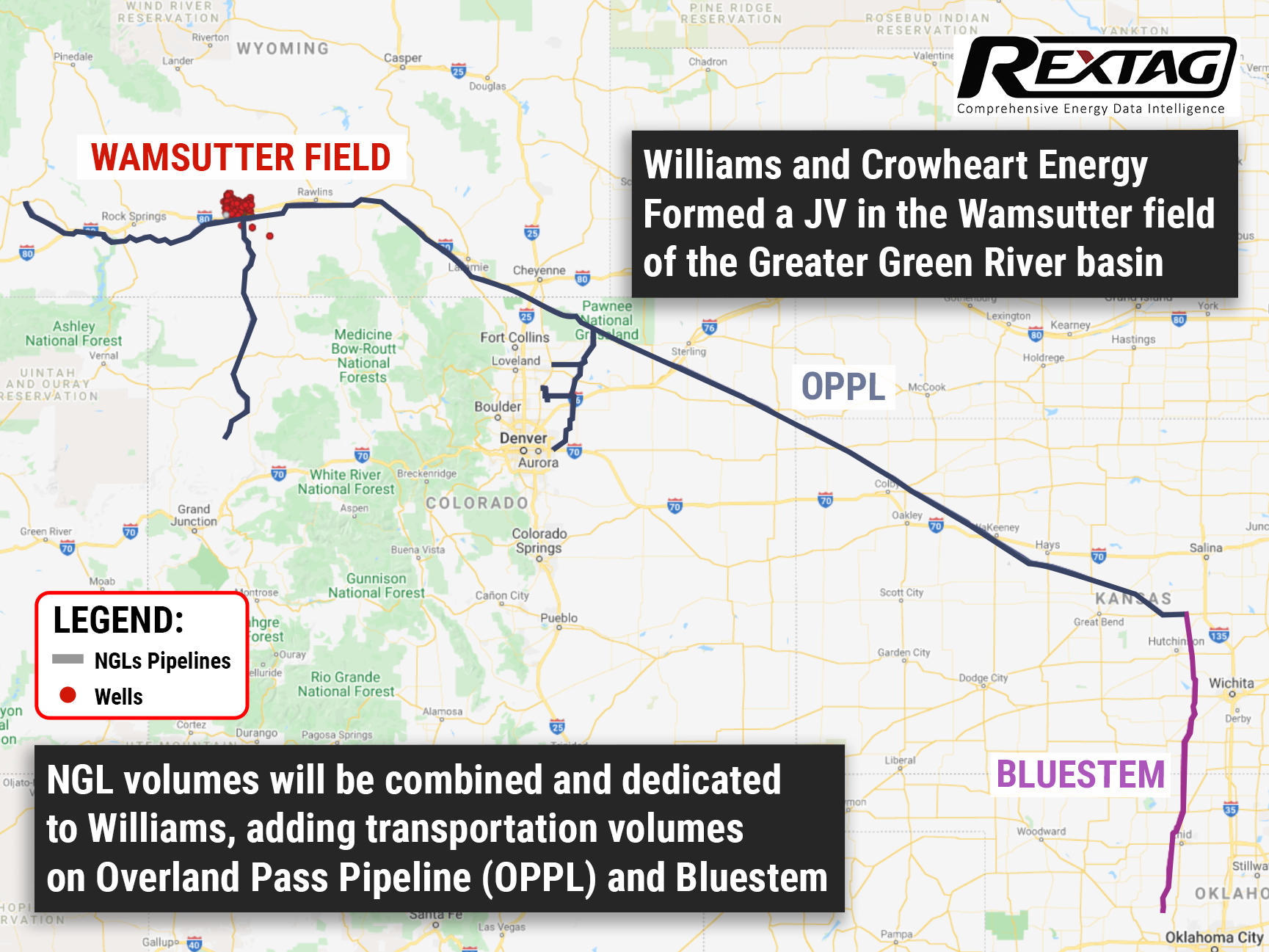Comprehensive Energy Data Intelligence
Information About Energy Companies, Their Assets, Market Deals, Industry Documents and More...
Smart Investments Are The Key To Success: Williams JV Brought Benefits At The End Of The Year
12/09/2021
The Williams Companies, Inc. reported stunning results, surpassing the previous year's third-quarter adjusted EBIDTA by 12% to $153 million. This is a $383 million increase in year-to-date EBIDTA.
The third quarter as a whole was spectacular for midstream companies. Dividend increases and buyback activity highlight management's confidence in their business. For the first time in two years, no midstream index members cut any of their dividends. And The William Cos. is not an exception.
Though the vast majority of the quarter's EBIDTA growth was attributed to production in Wyoming's Greater Green River Basin's Wamsutter Field. In this regard, Williams concluded a joint venture with Denver-based Crowheart Energy in July, in which Crowheart began operating properties owned by BP Plc and Southland.
As part of this upstream joint venture, three legacy assets of BP Plc and Southland were combined with Crowheart Energy's asset base into a contiguous area totaling over 1.2 million net acres.
A JV agreement states that 75% in this collaboration belongs to Williams, while Crowheart got the remaining 25%, although Crowheart may increase its ownership stake through performance for the sake of the development program designed to enhance the value of Williams midstream assets down the road.
Williams saw success in the development of its midstream assets and retained full ownership in the Wamsutter Field's consolidated upstream position under the JV. Furthermore, the company retained real estate, surface, and other rights that will enable it to expand the midstream and renewable energy businesses in Wyoming in the coming years.
Thanks to this agreement, Williams' upstream business contributed $55 million to adjusted EBITDA this quarter alone, since, according to CFO John Chandler, the majority of the production came from Wamsutter's upstream assets. Additionally, net of ownership fees, for the quarter the company earned 232 million CFEs. And they have also benefited from upstream operations of $83 million, almost entirely from the Wamsutter properties.
Analysts expected earnings of $0.28 per share from Williams, but it reported $0.34 per share, while revenue of $2.48 billion, which by itself was a 28.6% increase over the same period in 2020, beat the analyst estimate of $2.09 billion. With a net margin of 10.67% and a return on equity of 10.84%, Williams is poised for success in the fourth quarter as well.
According to president and CEO Alan Armstrong, Williams did not only exceed market expectations this quarter in terms of its financial performance but also continued to successfully execute multiple key projects and transactions that provided the company with a clear path to sustained growth in the foreseeable future.
If you are looking for more information about energy companies, their assets, and energy deals, please, contact our sales office mapping@hartenergy.com, Tel. 619-349-4970 or SCHEDULE A DEMO to learn how Rextag can help you leverage energy data for your business.
The Final Stretch: Energy Transfer Pushes For Mariner East Project Ahead Of The Stunning Q3 Results
![$data['article']['post_image_alt']](https://images2.rextag.com/public/blog/Energy-Transfer-Pushes-For-Mariner-East-Project-Ahead-Of-The-Stunning-Q3-Results .png)
Energy Transfer's lead in the world's NGL exports booked the company another successive quarter. With a global market share of almost 20%, the company is nigh unstoppable. But will it be enough to, finally, push the Mariner East project over the edge? If everything goes as planned, Mariner East's last segment could be operational by the end of the first half of 2022.
No More Gas Flaring: the Permian's Double E Pipeline is brought into service in West Texas
![$data['article']['post_image_alt']](https://images2.rextag.com/public/blog/The-Permians-DoubleE-Pipeline-is-brought-into-service-in-West-Texas.png)
Permian Basins gas infrastructure boom: Summit Midstream puts into service a new pipeline system, aimed at reducing gas flaring in the area. Besides ecological concerns, the project will also transport almost 1,5 billion cubic feet of gas per day — enough to supply 5 million U.S. homes every day. According to Federal Energy Statistics, the project cost a whopping $450 million.
![$data['article']['post_image_alt']](https://images2.rextag.com/public/blog/R262_Blog_Appalachian Basin Overview_ Marcellus, Utica, Trends, Predictions, 2022 vs 2024.png)
Appalachian Basin (formerly Marcellus and Utica) covers most of New York, Pennsylvania, Eastern Ohio, West Virginia, and Western Maryland in the north, reaching down to parts of Northwest Georgia and Northeast Alabama in the south. The basin is massive, covering about 185,000 square miles, roughly 1,000 miles long from northeast to southwest, and in some places, it's up to 300 miles wide. In this area, some major companies are making significant investments. EQT stands out as the largest producer in the Appalachian Basin, with other key players including Chesapeake, Range Resources, Antero, Repsol, and Gulfport also actively investing.
![$data['article']['post_image_alt']](https://images2.rextag.com/public/blog/R264_Blog_Kinder Morgan Overview_ 2022 vs 2023, Oil & Gas Wells, Pipelines, Terminals, Deals.png)
Kinder Morgan stands as North America's top independent mover of petroleum products with around 2.4 million barrels daily across the continent. The bulk of this flow happens through its Products Pipelines division, which navigates gasoline, jet fuel, diesel, crude oil, and condensate through a network of about 9,500 miles of pipelines. Alongside, the company maintains roughly 65 liquid terminals that not only store these fuels but also blend in ethanol and biofuels for a green touch.
![$data['article']['post_image_alt']](https://images2.rextag.com/public/blog/R263_Blog_Denver-Julesburg DJ Basin_ Wattenberg, Niobrara, Codell, 2022 and 2023 Overview.png)
The Denver-Julesburg (DJ) Basin, spanning Northern Colorado, Eastern Wyoming, Western Kansas, and parts of Nebraska, stretches from north to south, from north of Cheyenne, Wyoming, down to Colorado Springs. Its primary production field, the Wattenberg gas field, is located in Weld County and Northwestern Adams County in Northeast Colorado. Oil and gas production in the D-J Basin traces back to a discovery in Boulder County, Colorado, in 1901, marking a long history of energy development in the area. The basin is highly productive, primarily due to its stacked plays, similar to those in other regions like the Anadarko Basin (with its SCOOP and STACK plays) and the Permian Basin. This geological feature is a key reason for the high productivity of wells in the DJ Basin.